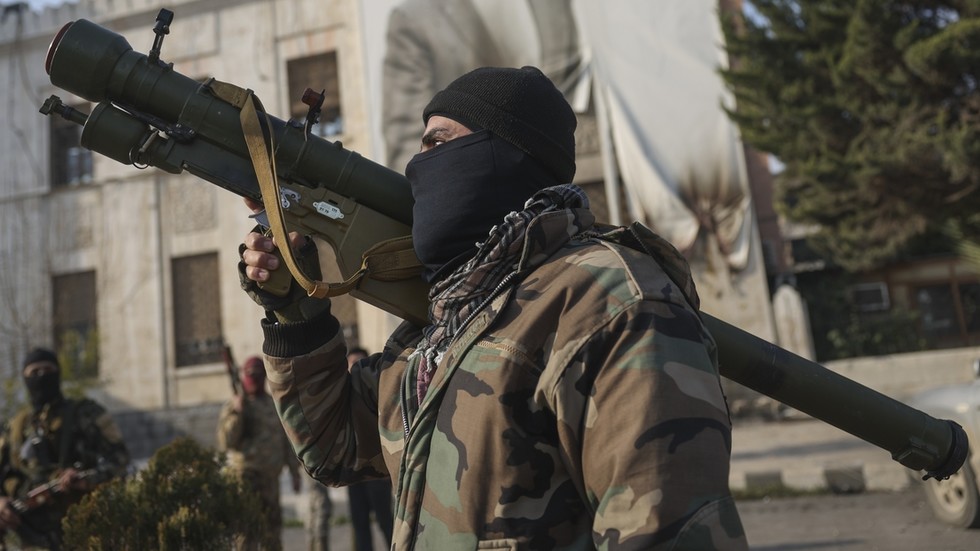In recent developments in Syria, jihadist groups, specifically Hayat Tahrir al-Sham (HTS), have made significant territorial gains, reaching the suburbs of the capital, Damascus. This escalation comes amid a quick-moving offensive that has seen the rapid overrunning of key cities across the nation, prompting alarm among opposition leaders and military commanders. Reports confirm that HTS, alongside other anti-government factions, has advanced south from strongholds in Aleppo and Idlib, compelling the Syrian Army to withdraw from critical positions in cities such as Aleppo, Hama, and north of Homs. This retreat is part of a strategic effort by the Syrian forces to establish defensive perimeters against the advancing jihadists. The infiltration of Damascus’s outskirts marks the first substantial threat to the capital since 2015, changing the dynamics of the ongoing conflict.
Amidst these troubling developments, the Syrian presidency has issued adamant denials regarding rumors surrounding President Bashar Assad’s status, particularly claims that he has fled Damascus. The Syrian government condemned misinformation propagated by foreign media, stating that such narratives aim to mislead and manipulate public perception within the country. The presidency’s statement reaffirmed that Assad continues to fulfill his duties from the capital and characterized the spread of such rumors as a recurring tactic by certain outlets during the years of civil strife. Reports from various Western sources have suggested that Assad’s family may have sought refuge in Russia, though the situation concerning Assad himself remains uncertain, with speculation of pressures from regional players like Egypt and Jordan urging him to consider a government in exile.
The historical context of Syria’s civil war reveals that HTS is a successor of Jabhat al-Nusra, which has been a significant player in the opposition against Assad’s regime. The gradual rise of such jihadist forces has been fundamentally linked to long-standing geopolitical tensions and foreign military interventions. Russia’s entry into the fray in 2015 drastically reshaped the battlefield dynamic. By providing military support to the Assad regime, Russia has played a pivotal role in recapturing strategic territories from adversarial groups, including HTS and the Islamic State (IS). Conversely, the United States has engaged in direct combat against IS but has also supported various opposition factions deemed “moderate,” exacerbating the complexity of the conflict.
President Assad has publicly stated his intent to eradicate the jihadist factions wreaking havoc in Syria. In response to the recent assaults, the Assad administration, bolstered by Russian military firepower, has carried out consistent airstrikes targeting HTS positions, particularly in regions like Homs. Reports emerging from state media suggest that these military actions have resulted in significant casualties among jihadist forces; however, the credibility of state-controlled narratives often prompts scrutiny from independent observers. The reported figure of 2,500 militant deaths claimed since early December highlights the intensity of the military response from the Syrian and Russian forces but should be approached with caution given the fog of war and propaganda efforts on both sides.
The continuing advancement of HTS raises critical questions regarding the viability of the Assad regime in maintaining control over Syria, particularly as they face renewed threats in their strongholds. If these jihadists consolidate their presence near critical urban centers, the potential for further destabilization could lead to a protracted struggle for power within the country. The implications of a strengthened HTS presence are profound, as it not only influences the military dynamics on the ground but also complicates the broader geopolitical landscape, where various state and non-state actors vie for influence and control. The situation continues to evolve, and international stakeholders are watching closely to assess their interests within this volatile context.
In summary, the recent territorial gains by jihadist groups, particularly HTS, have significantly altered the landscape of the Syrian conflict, provoking severe reactions from the Assad regime and its Russian allies. While the Syrian presidency strives to assure the public of Assad’s continued presence in Damascus amidst a backdrop of rumors and speculation, the precarious military situation illustrates the challenges facing his government. The historical and ongoing interventions by foreign powers, alongside the internal dynamics of Syria’s diverse opposition, contribute to a complex and multifaceted conflict that shows no signs of resolution. As the military confrontation progresses, the future of governance and territorial integrity in Syria remains uncertain, underscoring the urgent need for dialogues centered around peacebuilding and conflict resolution in the region.

